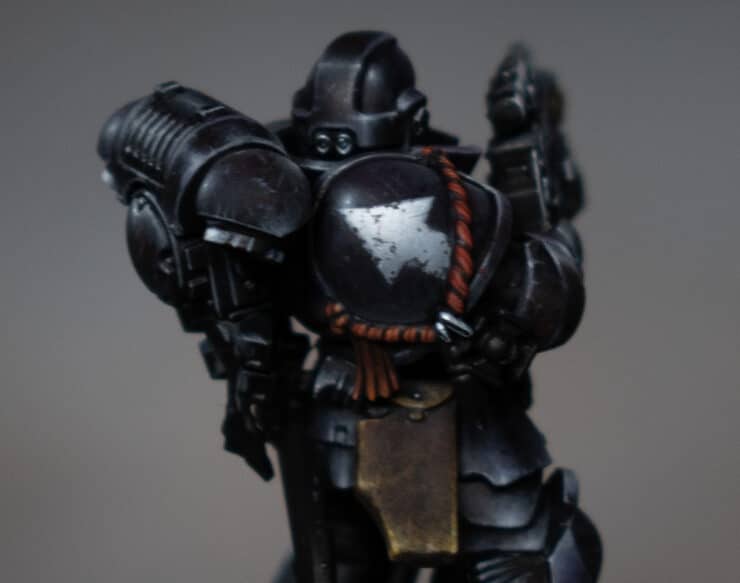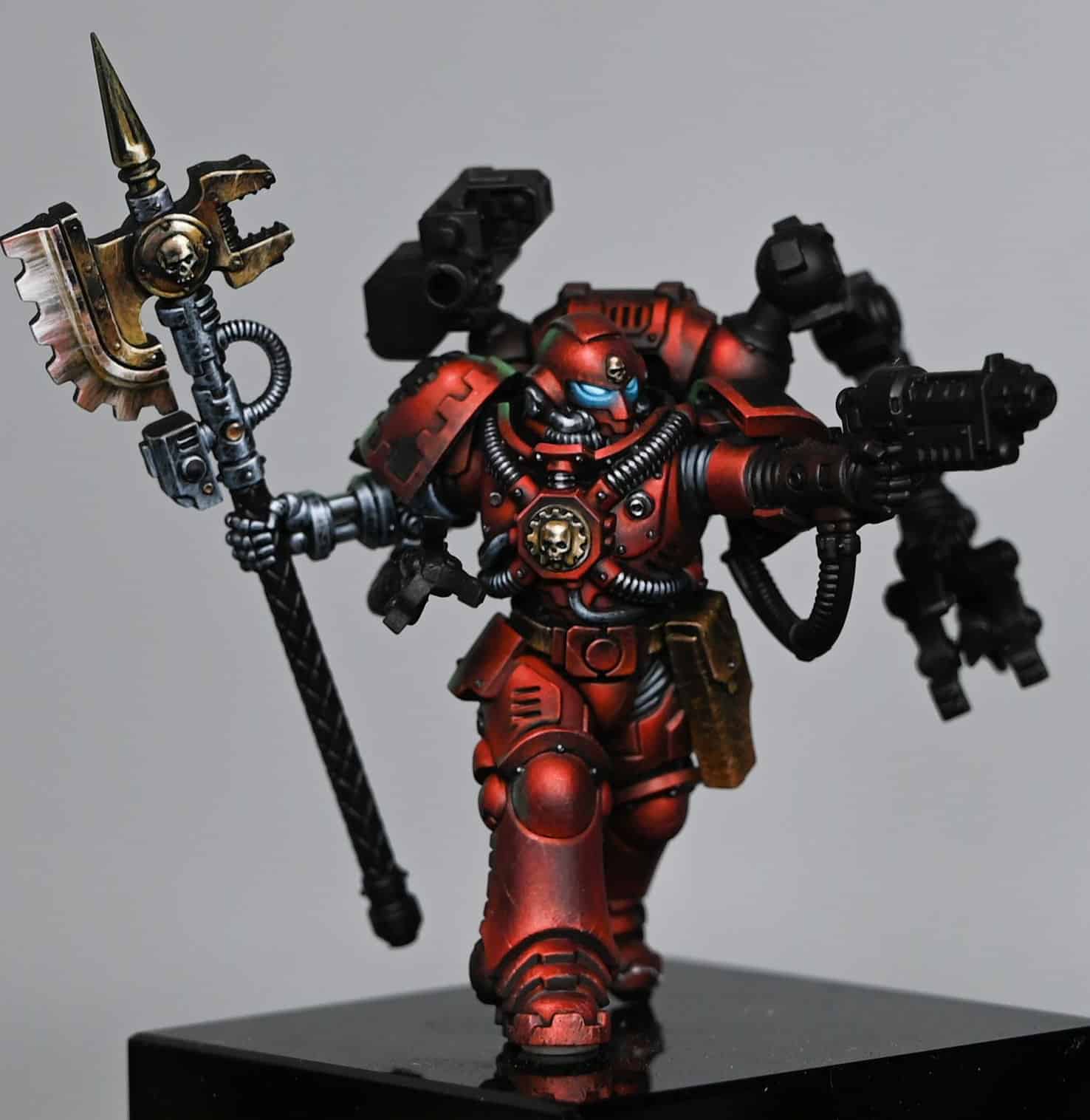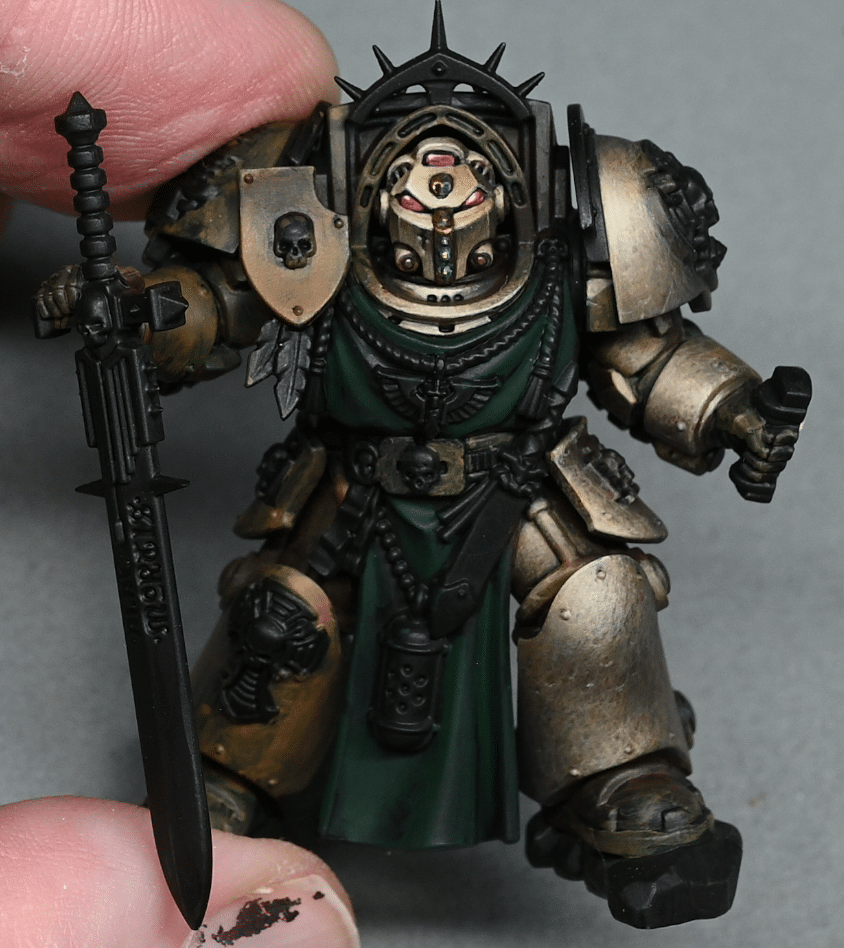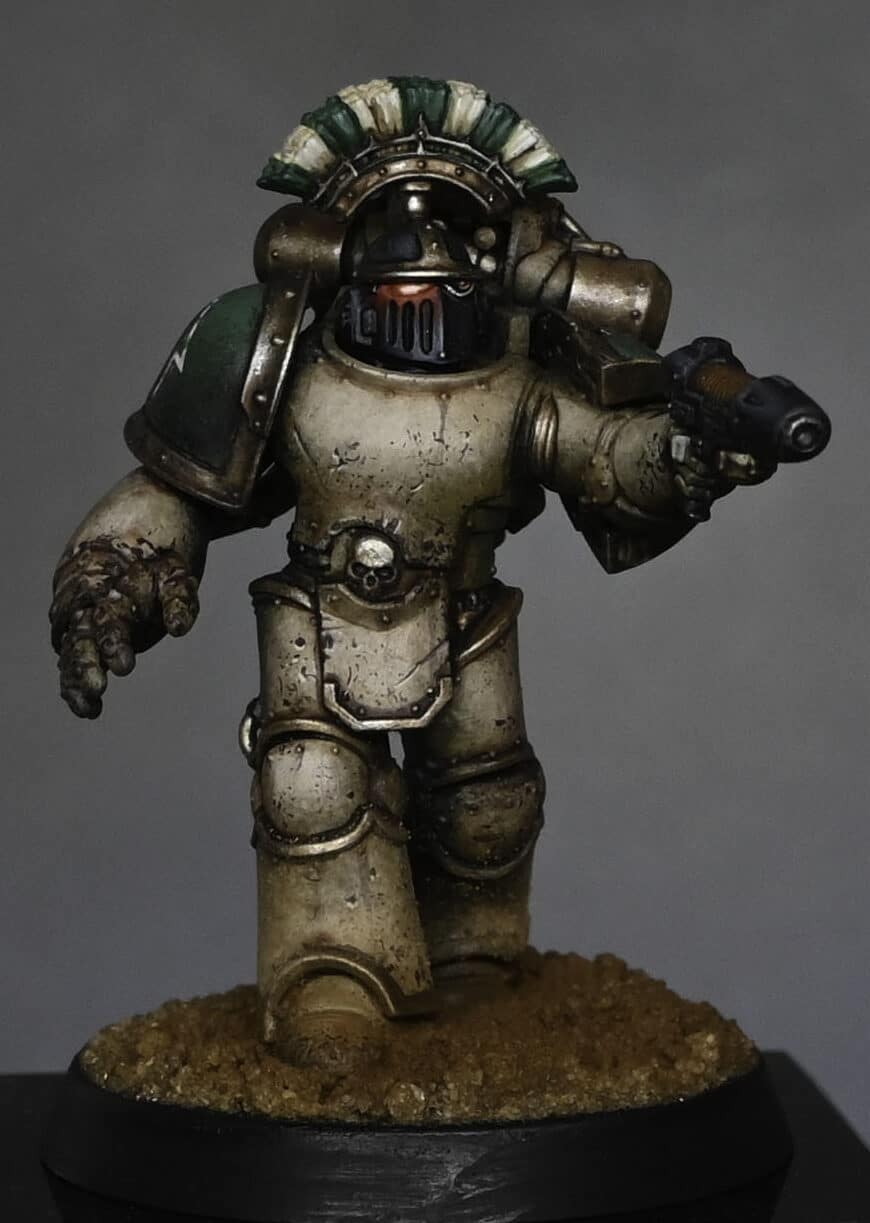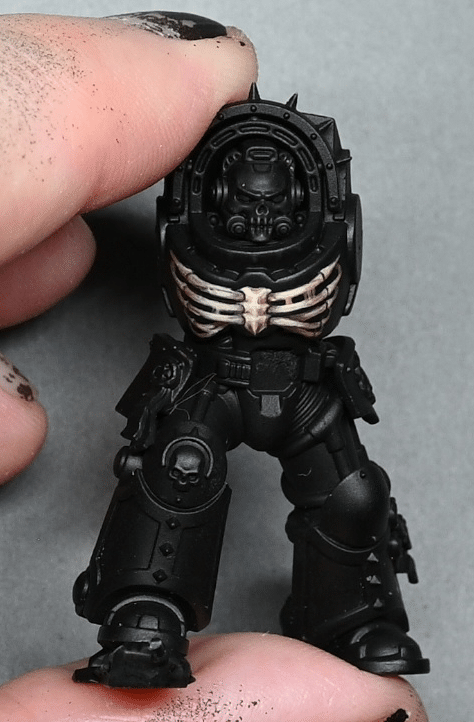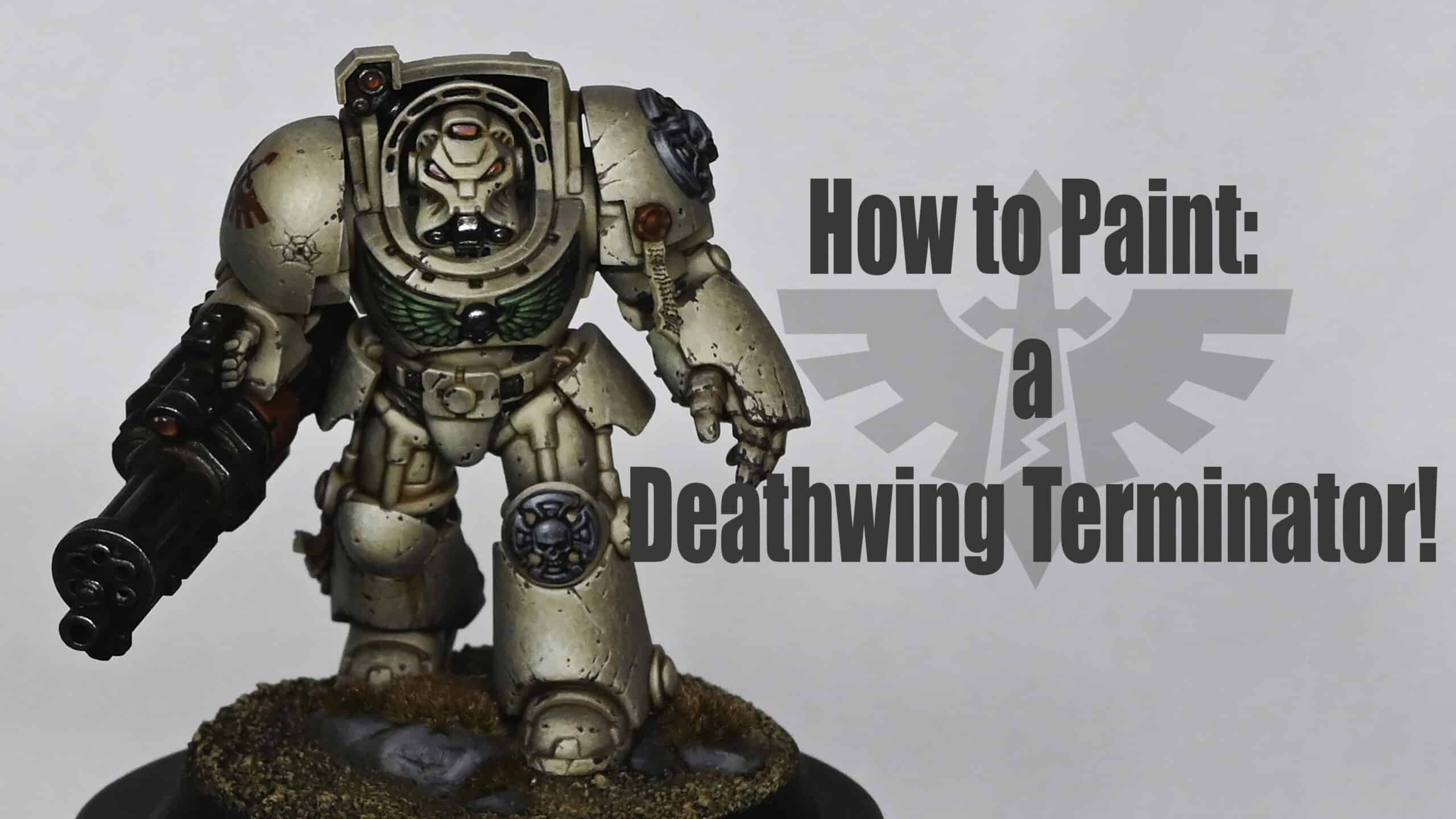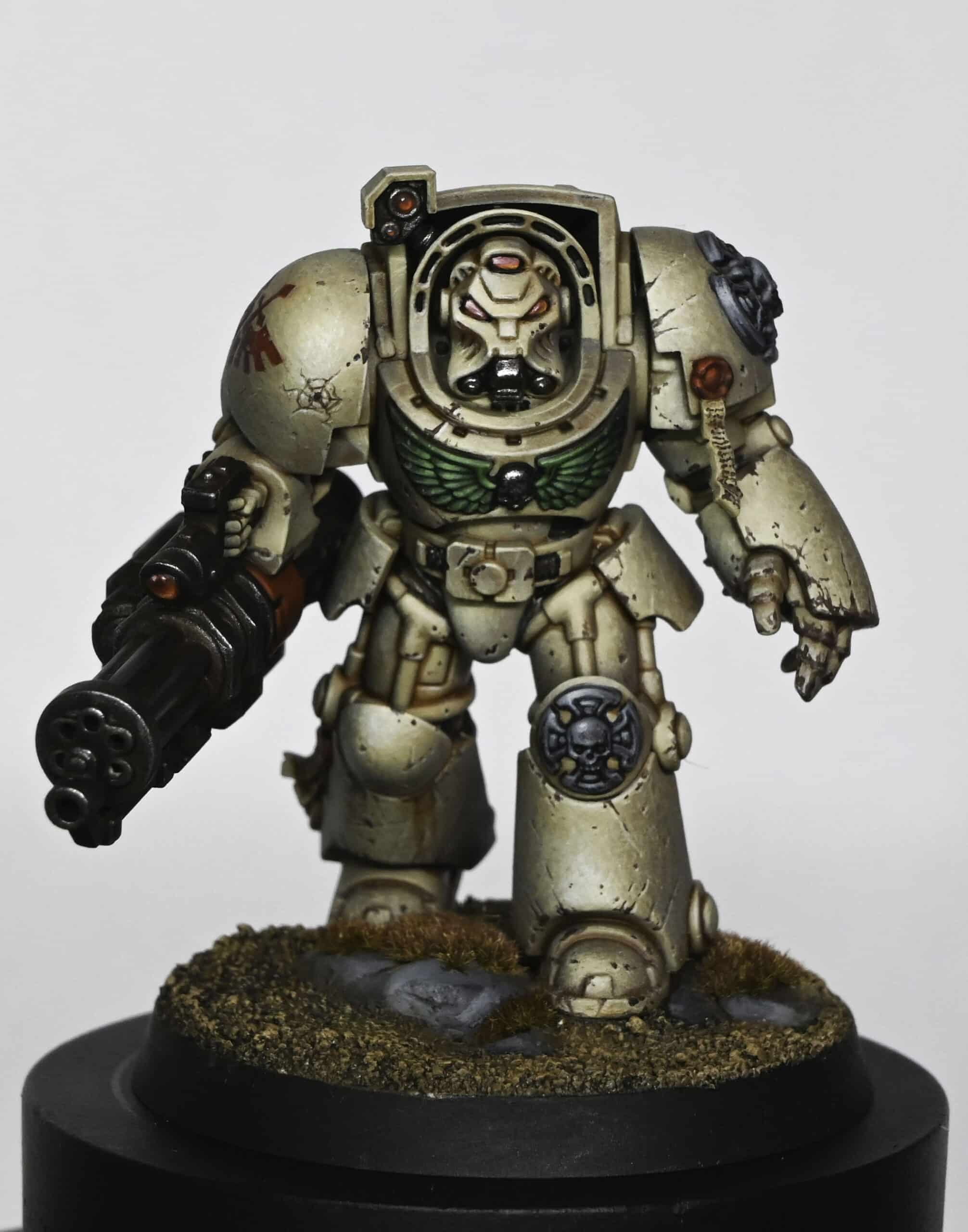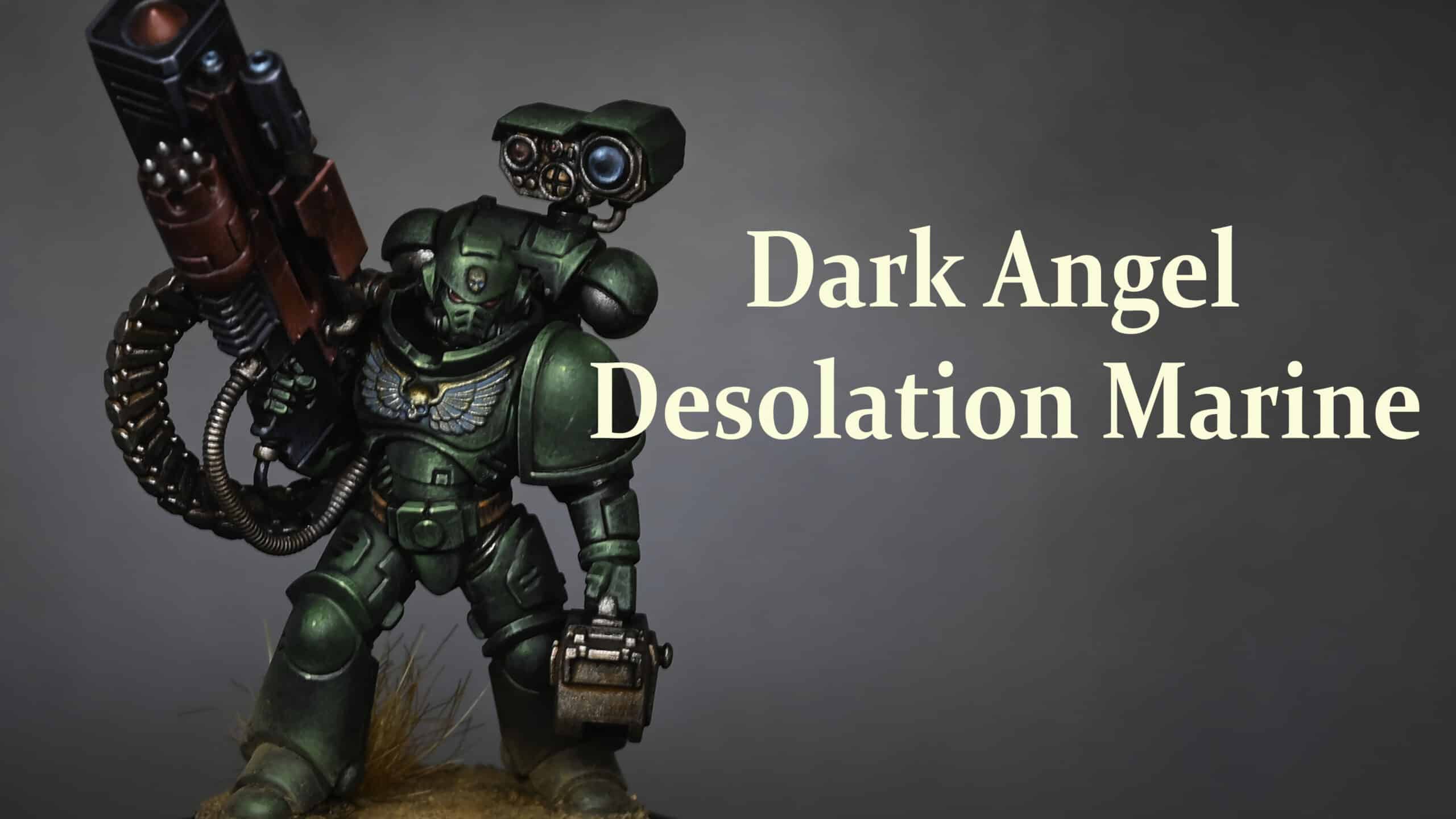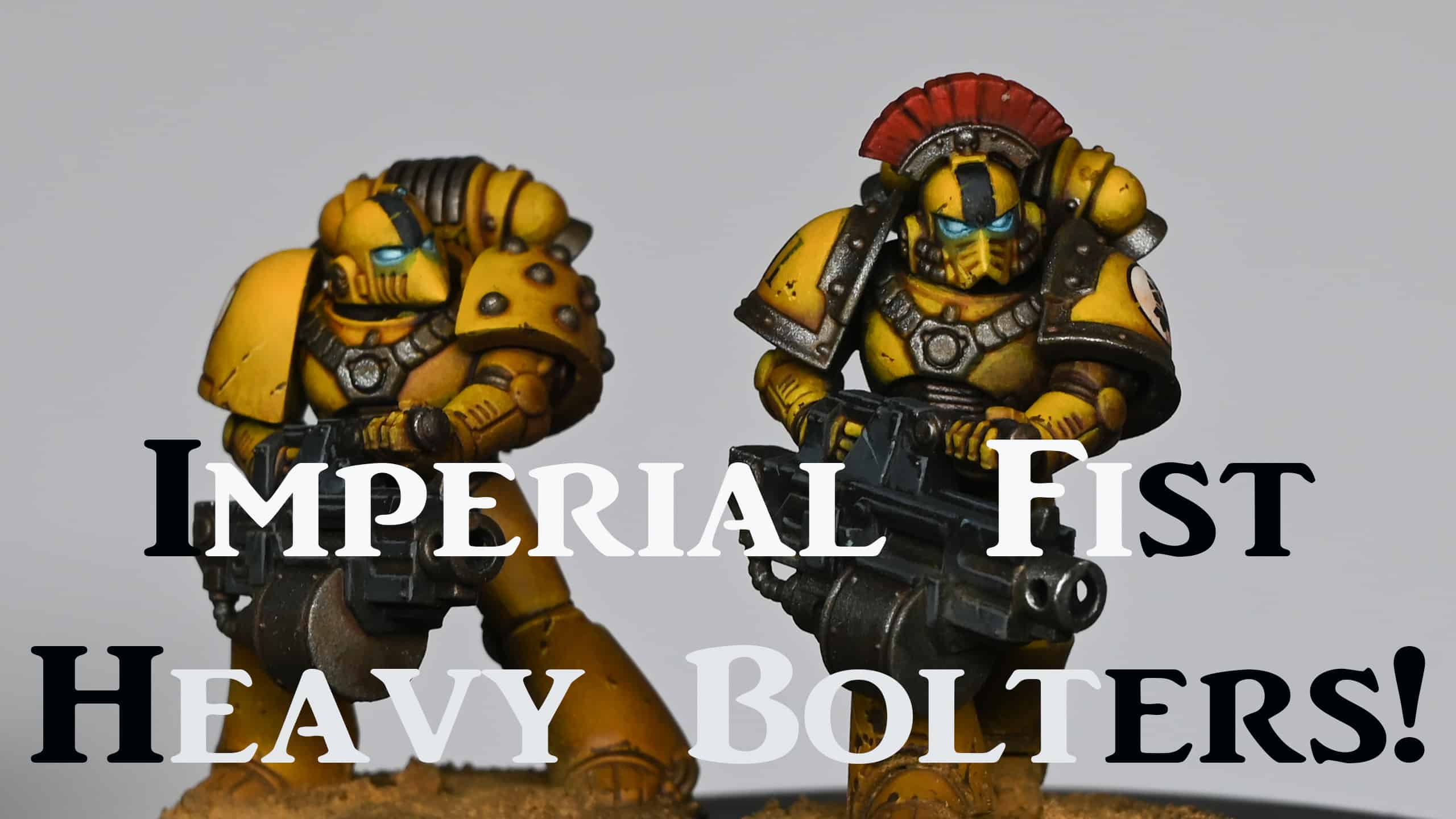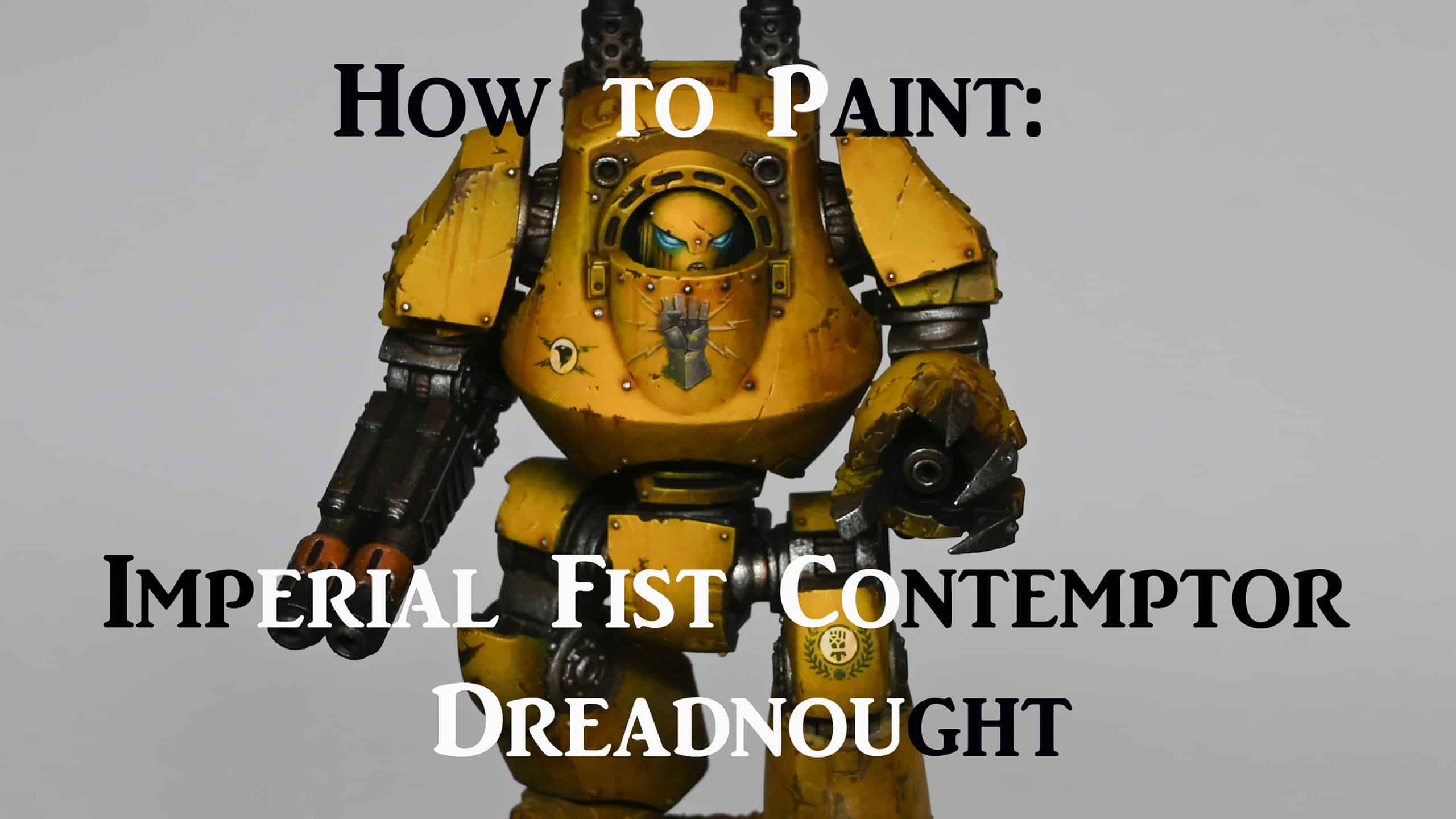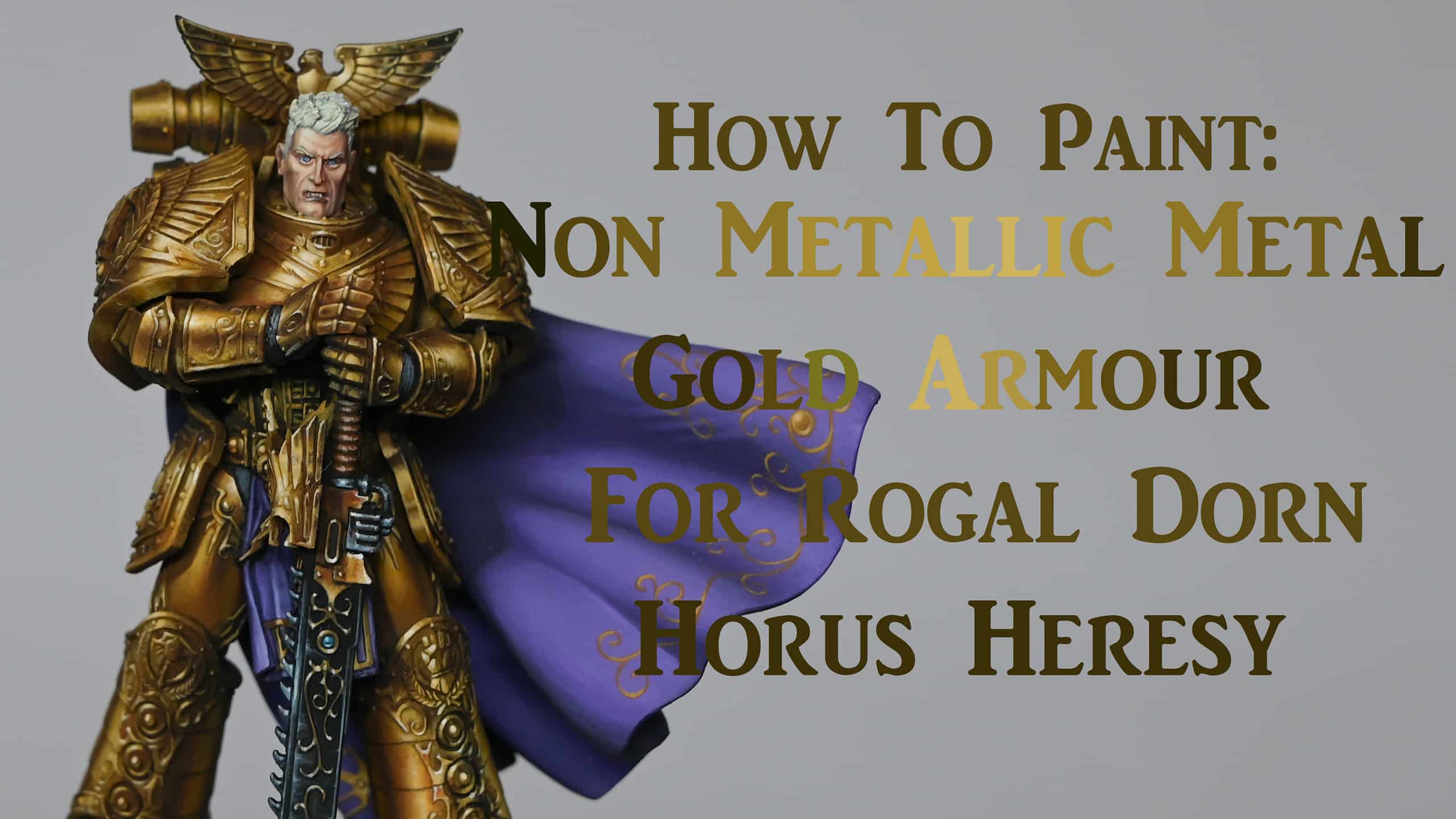In my latest freehand for space marines tutorial “How to Paint a Shoulder Pad Tactical Marking for a Space Marine” we delve into the intricate process of painting the iconic shoulder pad marking for your Raven Guard Space Marine miniature from Games Workshop. Follow along as I break down each step, from laying down the base colour to adding highlights and battle damage, ensuring your model stands out on the battlefield!
Video: How to Paint a Shoulder Pad Tactical Marking for a Space Marine
All videos are recorded in HD 1080p or higher – use full screen for the full effect and let the video load completely.
Step-by-Step: How to Paint a Shoulder Pad Tactical Marking for a Space Marine
Prepare the Model – Ensure your Raven Guard Space Marine model is assembled and primed. Make sure to paint the highlights on the shoulder pad before starting on the tactical arrow marking.
Painting the Base Colour – Dip your fine detail brush into Vallejo Heavy Greyblue (Celestra Grey) paint. Begin by painting a line straight down the middle of the shoulder pad. Then, work outwards from this line to map the basic shape of the arrow. Focus on neat edges and use the tip of the brush for sharp lines.
Refining the Shape – Continue to refine the shape of the arrow, adjusting as needed to ensure symmetry and neatness. Pay attention to the edges, making sure they are clean and precise. Don’t worry too much about perfection, as minor mistakes can be covered with later detailing.
Adding Highlights – Using P3 Morrow White (Ceramite White), apply highlights to the arrow. Be cautious not to overlap onto the grey base too much. Focus on creating smooth transitions, blending the white into the grey gradually. Work from the centre of the arrow outwards for better control.
Glazing for Smoothness – To achieve a smoother finish, apply glazes of white paint towards the highlight areas. This helps to blend the colours seamlessly and enhances the overall appearance of the marking. Be mindful of brushstrokes and apply the glazes sparingly.
Adding Battle Damage – For a weathered look, use Vallejo German Grey (Skavenblight Dinge with a touch of black) to add battle damage to the arrow. Apply tiny marks and scratches strategically, focusing on areas that would naturally wear over time. Be careful not to go overboard, as realism is key.
Painting the Red Cord – Switch to painting the red cord that goes over the shoulder. Use Vallejo Amarantha Red (Evil Sunz Scarlet) to carefully paint the cord, layering it to achieve a rich colour. Be mindful not to get any red paint on areas you’ve already finished.
Adding Details to the Cord – For added realism, paint on some details such as individual strands on each notch of the cord. Use Citadel Wild Rider Red (Evil Sunz Scarlet) for this, applying thin lines to represent the strands. Take your time and focus on precision.
Final Highlights – Finish off the red cord by adding final highlights with Citadel Fire Dragon Bright (Wild Rider Red mixed with a touch of white). Apply these highlights sparingly to the top parts of the cord to maintain consistency.
Finishing Touches If needed, do some final touch-ups and adjustments. Use black paint for glazing to tidy up any areas where needed, ensuring a clean and polished look. Step back and admire your painted Shoulder Pad Tactical Marking for a Space Marine!
More Space Marine Tutorials!
If you don’t have an account here on my website, please sign up here! I have over 350 video tutorials with steps and tips, plus a selection of PDFs. If you are not sure about joining, you can explore my free videos with a free membership, or take the plunge and become a full subscriber for full access.
If you’d prefer to support me on Patreon, please visit: https://www.patreon.com/RichardGray





